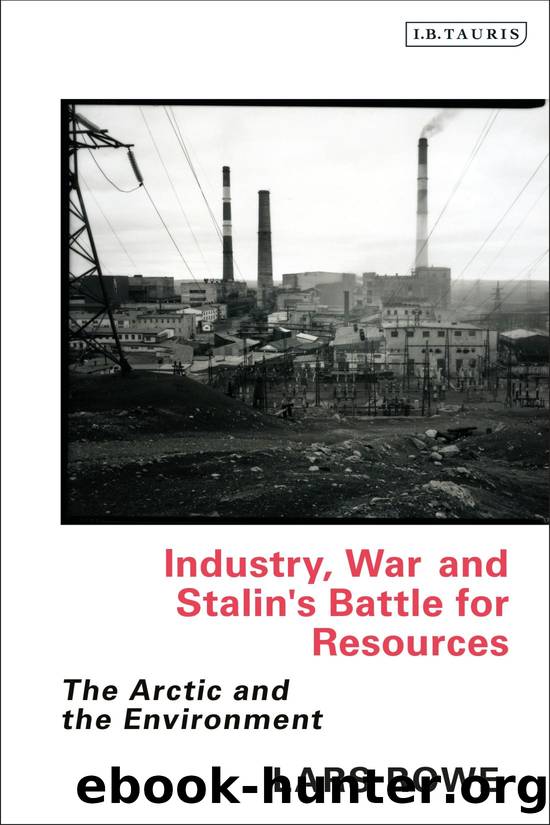Industry, War and Stalin's Battle for Resources: The Arctic and the Environment by Lars Rowe

Author:Lars Rowe [Rowe, Lars]
Language: eng
Format: epub
Tags: Public Policy, Europe, Geopolitics, Modern, 20th Century, Political Science, World, Scandinavia, History, Environmental Policy, Russian & Former Soviet Union
ISBN: 9780755600441
Google: H9LsDwAAQBAJ
Goodreads: 49672396
Publisher: I.B. Tauris
Published: 2020-09-03T00:00:00+00:00
6
Conclusion
What we know is that ⦠nobody knows anything. You canât know anything. The things you know you donât know. Intention? Motive? Consequence? Meaning? All that we donât know is astonishing. Even more astonishing is what passes for knowing.
Philip Roth, 20051
These humbling words remind us that drawing conclusions is a dangerous sport. Much like the Stalinist leadership, historians are not omniscient and can therefore only present their own interpretations of past events. To assert that the interpretation offered here represents anything close to the full and absolute truth would be folly. Bearing this sobering insight in mind, I will nevertheless attempt in the following to make sense of the many twists and turns in the history of Petsamo, PNO, Pechenga and Pechenganikel.
In the first chapter of this book, I introduced several topics relevant to developments in Petsamo/Pechenga, most notably the economic and political nature of the Stalinist regime. In this concluding chapter, with hindsight to the narrative that has been presented in this book, I will readdress these topics. Finally, I offer some last remarks pertaining to the two aspects â Soviet economic ambitions and security concerns â that have helped frame the research presented in this book.
Pechenga and Soviet autarchy
When Finlandâs claim to Pechenga gained acceptance around the negotiating table in Tartu in October 1920, this was hardly seen as a strategic blunder by the Soviet delegation. The eastern slopes of the Pasvik valley had scant military significance. Topographically speaking, the territory might even become a burden in the event of an attack from the West: its low elevation would make it hard to defend. Neither was there anything to indicate that Soviet economic interests would suffer by the loss of this territory. There was apparently nothing in Pechenga that did not exist in abundance elsewhere in the former tsardom. For Finland, the acquisition of Pechenga primarily meant that, if functioning roads and railway tracks could be built, the young republic would no longer be partly trapped behind frozen waters in the Gulf of Bothnia or be dependent on passage through the narrow Danish straits when exiting the Baltic Sea. Finland would enjoy unrestricted access to the world oceans all year round.
Less than twelve months after Pechenga had become Petsamo, things started to change. With Talvia and Törnquistâs geological expedition in 1921, a process that would furnish the territory with strategic importance was set in motion. Slightly more than ten years later, the economic potential of Petsamo was drastically upgraded. Major industrial players negotiated with the Finnish state for the right to exploit the massive mineral ore deposits identified there. Fanning the flames of interest, the ore that was to be drawn from Petsamo contained not just any metal: it contained nickel, a âstrategic metalâ. Due to its remarkable heat and shock resistance, nickel was coveted by the worldâs producers of munitions, armoured steel plates and other means of war. I will argue that it was a deepening Soviet appreciation of Petsamoâs nickel resources and the role the strategic
Download
This site does not store any files on its server. We only index and link to content provided by other sites. Please contact the content providers to delete copyright contents if any and email us, we'll remove relevant links or contents immediately.
Zero to IPO: Over $1 Trillion of Actionable Advice from the World's Most Successful Entrepreneurs by Frederic Kerrest(4295)
Machine Learning at Scale with H2O by Gregory Keys | David Whiting(4179)
Never by Ken Follett(3790)
Harry Potter and the Goblet Of Fire by J.K. Rowling(3774)
Ogilvy on Advertising by David Ogilvy(3510)
Shadow of Night by Deborah Harkness(3303)
The Man Who Died Twice by Richard Osman(2997)
Book of Life by Deborah Harkness(2867)
The Tipping Point by Malcolm Gladwell(2827)
Will by Will Smith(2793)
0041152001443424520 .pdf by Unknown(2784)
My Brilliant Friend by Elena Ferrante(2774)
How Proust Can Change Your Life by Alain De Botton(2742)
Purple Hibiscus by Chimamanda Ngozi Adichie(2652)
How to Pay Zero Taxes, 2018 by Jeff A. Schnepper(2602)
Hooked: A Dark, Contemporary Romance (Never After Series) by Emily McIntire(2500)
Rationality by Steven Pinker(2291)
Borders by unknow(2229)
Can't Hurt Me: Master Your Mind and Defy the Odds - Clean Edition by David Goggins(2227)
